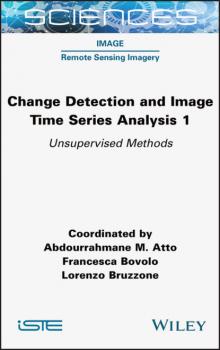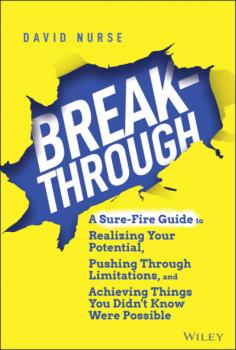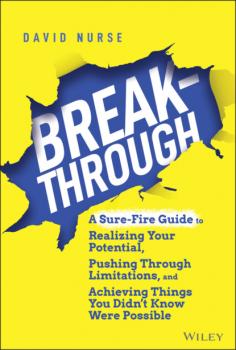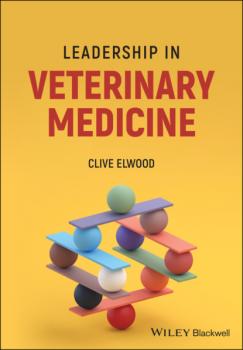John Wiley & Sons Limited
Все книги издательства John Wiley & Sons LimitedA Practical Approach to Special Care in Dentistry
A Practical Approach to Special Care in Dentistry Learn to treat dental patients with disabilities or who are medically compromised A Practical Approach to Special Care in Dentistry delivers a comprehensive and robust overview of special care dentistry reflecting the most common compromised clinical conditions dentists will regularly encounter. It discusses more than 50 topics based on real-world clinical cases focusing on two main areas: patients with disabilities and medically compromised patients. The book uses a problem-based learning approach and helps the reader to apply knowledge in a clinical case context. Each chapter contains a case report establishing the main risk factors relating to the provision of dental treatment. That is followed by a practical and realistic set of adaptations for the reader to follow to minimise the rate and severity of potential complications for their patient. The book also includes: A thorough introduction to patients suffering from disabilities, including physical disabilities, like cerebral palsy and epilepsy, and cognitive impairments, like Down’s Syndrome Comprehensive explorations of the treatment of medically compromised patients, like those with infectious diseases, endocrine diseases, hepatorenal disease, and cardiovascular disease Practical discussions of other special patient situations, like those with allergies, antiresorptive and antiangiogenic drugs, terminal patients, underhoused patients, and pregnant or breastfeeding patients Perfect for general dentists, undergraduate students of odontology, and graduate students of special care dentistry, A Practical Approach to Special Care in Dentistry is also a must-read resource for dental specialists in special care dentistry, hospital odontology, geriatric odontology, oral surgery, and dental hygienists.
Algebra and Applications 2
This book is part of <i>Algebra and Geometry</i>, a subject within the SCIENCES collection published by ISTE and Wiley, and the second of three volumes specifically focusing on algebra and its applications. Algebra and Applications 2 centers on the increasing role played by combinatorial algebra and Hopf algebras, including an overview of the basic theories on non-associative algebras, operads and (combinatorial) Hopf algebras.<br /><br />The chapters are written by recognized experts in the field, providing insight into new trends, as well as a comprehensive introduction to the theory. The book incorporates self-contained surveys with the main results, applications and perspectives. The chapters in this volume cover a wide variety of algebraic structures and their related topics. Alongside the focal topic of combinatorial algebra and Hopf algebras, non-associative algebraic structures in iterated integrals, chronological calculus, differential equations, numerical methods, control theory, non-commutative symmetric functions, Lie series, descent algebras, Butcher groups, chronological algebras, Magnus expansions and Rota–Baxter algebras are explored.<br /><br /><i>Algebra and Applications 2</i> is of great interest to graduate students and researchers. Each chapter combines some of the features of both a graduate level textbook and of research level surveys.
Conflicts, Crimes and Regulations in Cyberspace
The study of cyberspace is relatively new within the field of social sciences, yet interest in the subject is significant. <i>Conflicts, Crimes and Regulations in Cyberspace</i> contributes to the scientific debate being brought to the fore by addressing international and methodological issues, through the use of case studies.<br /><br />This book presents cyberspace as a socio-technical system on an international level. It focuses on state and non-state actors, as well as the study of strategic concepts and norms. Unlike global studies, the socio-technical approach and “meso” scale facilitate the analysis of cyberspace in international relations. This is an area of both collaboration and conflict for which specific modes of regulation have appeared.
Change Detection and Image Time-Series Analysis 1
Change Detection and Image Time Series Analysis 1 presents a wide range of unsupervised methods for temporal evolution analysis through the use of image time series associated with optical and/or synthetic aperture radar acquisition modalities. <br /><br />Chapter 1 introduces two unsupervised approaches to multiple-change detection in bi-temporal multivariate images, with Chapters 2 and 3 addressing change detection in image time series in the context of the statistical analysis of covariance matrices. Chapter 4 focuses on wavelets and convolutional-neural filters for feature extraction and entropy-based anomaly detection, and Chapter 5 deals with a number of metrics such as cross correlation ratios and the Hausdorff distance for variational analysis of the state of snow. Chapter 6 presents a fractional dynamic stochastic field model for spatio temporal forecasting and for monitoring fast-moving meteorological events such as cyclones. Chapter 7 proposes an analysis based on characteristic points for texture modeling, in the context of graph theory, and Chapter 8 focuses on detecting new land cover types by classification-based change detection or feature/pixel based change detection. Chapter 9 focuses on the modeling of classes in the difference image and derives a multiclass model for this difference image in the context of change vector analysis.
Breakthrough
Deliver innovative results like clockwork with this repeatable formula for creativity-on-demand Have you ever sat down at your desk with an impossible deadline or an insurmountable obstacle staring you directly in the face and an expectation that you’ll come up with a groundbreaking idea and solution? In Breakthrough, you’ll find a powerful framework for bringing innovation and creativity to the surface not just once, but on a regular, daily basis. In Breakthrough , bestselling author, acclaimed speaker, and life optimization coach David Nurse provides an actionable and clearly organized structure for maximizing your breakthrough ideas. Breakthrough outlines easy-to-follow steps for outperforming your potential: An accessible blueprint—backed by scientific data and years of case studies with the top athletes, entrepreneurial minds, and leaders throughout the world—to unlocking your creative potential Conclusive proof that busts the myths of the lone genius, unpredictable ‘a-ha’ lightbulb moments, and little happy accidents Ways to promote an environment and mindset in which groundbreaking new ideas can flow and occur naturally and seamlessly based on a repeatable formula A must-read for any athlete, manager, executive, or parent tasked with delivering dynamic results in a flash, Breakthrough also belongs on the bookshelves of product design professionals, marketers, and other creative types who seek to consistently exceed expectations. Breakthrough is not about going from good to great; it’s about going from great to outstanding!
Leadership in Veterinary Medicine
LEADERSHIP IN VETERINARY MEDICINE Leadership in Veterinary Medicine provides both theoretical and practical information for veterinary professionals who are contemplating leadership or currently facing day-to-day leadership challenges. This much-needed book introduces and explores key leadership concepts in the veterinary context whilst encouraging self-reflection through real-world scenarios. Each chapter outlines a particular leadership concept or issue and includes a topic summary, discussion questions, full references and further reading suggestions. This thought-provoking text: Explores the principal areas of leadership for both veterinary professionals and for those leading veterinary professionals Discusses various leadership styles, competencies, behaviours and perspectives Addresses topics such as leadership assessment, organisational dynamics, interpersonal communication, remote and virtual leadership, and collaboration skills Assists readers in developing strategy, leading change, creating effective teams and improving staff engagement Includes practical cases and examples highlighting challenges in veterinary leadership Leadership in Veterinary Medicine is a must-read for all veterinary professionals in leadership posts, for those aspiring to be leaders and for instructors in veterinary schools and veterinary nursing training organisations.









